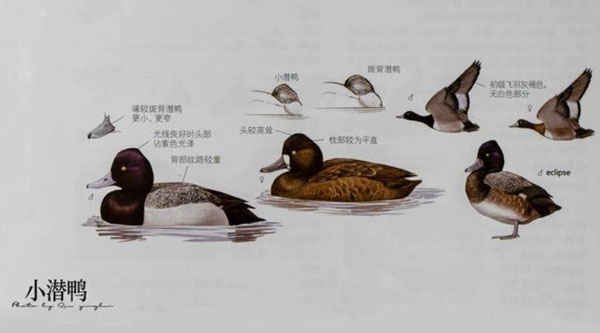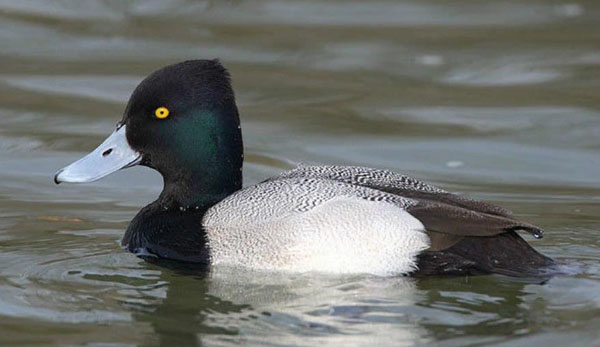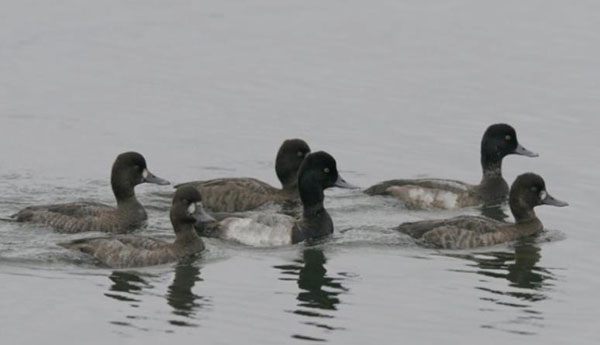Aythya affinis
IUCN
LCBasic Information
Scientific classification
- name:Aythya affinis
- Scientific Name:Aythya affinis,Lesser Scaup
- Outline:Waterfowl
- Family:Anseriformes Anatidae Duckling
Vital signs
- length:38-48cm
- Weight:730-850g
- lifetime:6-10years
Feature
It rarely sings and is a deep-water bird that is good at diving by folding its wings.
Distribution and Habitat
It breeds in northern Asia, Alaska and the northernmost part of Canada. The American Pochard migrates to the east and west coasts of Canada and the United States, the Great Lakes, and the southern United States in winter.
During the breeding period, it mainly inhabits freshwater lakes, ponds and swamps in open areas rich in aquatic plants. The wintering habitat is generally open bays, freshwater and saltwater wetlands.
Appearance
Round body, large head, iron-black head with purple sheen, feathers on the top of the head stand lower than other large diving ducks. Back is almost entirely white. Small head and back, light blue bill, black tip and narrower than other large diving ducks. Neck, chest and upper flaps are shiny black, olive brown on the left and right sides form a sharp contrast with the white chest and abdomen. There is a shiny black gray tail, and the undertail coverts are black. The wings are white and light brown, the legs and feet are gray, and the iris is yellow.
The male's head is usually black with a metallic luster. The female is pure brown.
Details

The Lesser Pochard is a migratory bird that forms a flock of 25-50 birds when migrating. Most of the wintering migration flight routes are through the central Mississippi, along Mexico and Florida to the Gulf Coast. Some go to Central America, the Caribbean and northern Colombia, and a few winter migrants occasionally reach Ecuador, Venezuela and Trinidad.

The small diving duck is omnivorous, mainly eating clams, lobsters, aquatic insects, and also eating raw grass, seeds, wild celery and a large amount of wild rice, as well as frogs and small fish. It often forages in shallow waters near the water where there are lush plants. Foraging activities are mainly in the early morning and dusk. During the day, it rests on the shore or floats on the open water to sleep. The foraging method mainly relies on diving for food, usually in places where the water is not too deep. Sometimes it also puts its head into the water in shallow waters near the water, or dives into the water with its tail facing up to feed.

The Pochard is the most common and widespread species among North American ducks. The breeding area is spread across the prairie potholes in the northern United States to the Bering Strait, and it also breeds in large numbers in the northern forests of Canada. During the breeding season, the male duck helps the female duck choose a nesting site and hibernates along the coast or in larger lakes. It usually nests in reeds or cattails in shallow water near the water. It is a floating nest, usually floating among the water grass or semi-fixed on the water grass, which can rise and fall with the rise and fall of the water surface. It also nests on the grass near the water. The nest is made of dry plant stems and leaves, and is padded with a lot of down feathers. Both males and females participate in the raising of chicks.








